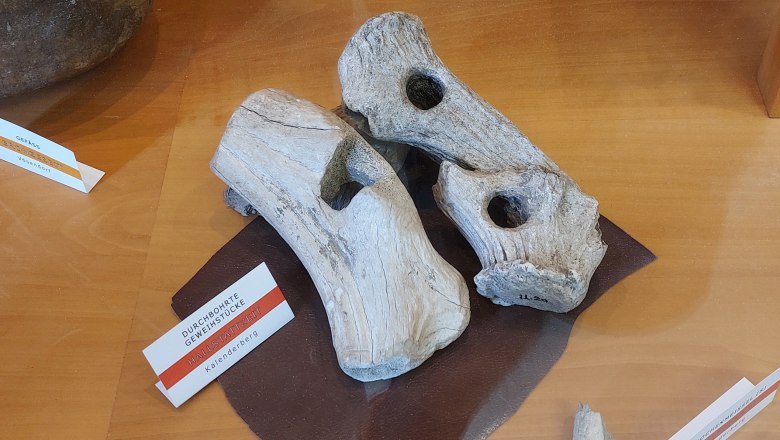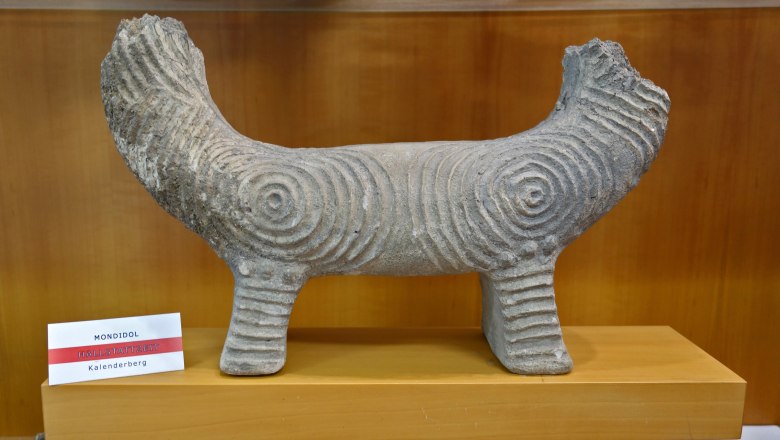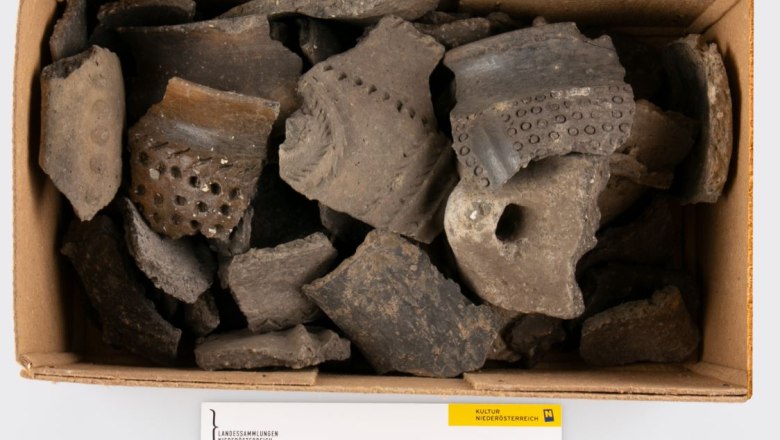The Hallstatt-period settlement on the Kalenderberg near Mödling
Historical sites
Description
One of the most important Hallstatt hilltop settlements in Lower Austria was located on the plateau of the Kalenderberg on the municipal territory of the town of Mödling and the market town of Maria Enzersdorf.
The plateau of the Kalenderberg has an area of around 600 x 500 m and falls steeply all around, even vertically in places. Only in the north, where a ditch cuts through the flank, is it possible to reach the mountain. This location is ideal for a hilltop settlement.
The "Kalenderberg culture"
After the first finds in 1892, several excavations were carried out on the mountain plateau from 1908 to 1911. In addition to fragments of the enigmatic "Mondidole", pottery with plastic decorations such as strips, garlands and plait patterns were found, which prompted the Viennese archaeologist Oswald Menghin to speak of a "Kalenderberg culture". This is still regarded today as a regional form of the eastern Hallstatt culture of the early Iron Age (750 to 450 BC).
In 1970/71 and 1976/77, the Natural History Museum Vienna carried out further excavations, mainly along the rampart. It was apparently made of gravel and stone and possibly had a wooden supporting structure. On the south side of the enclosure, the rampart had a kind of stone packing, possibly the remains of a dry stone wall. The front slope towards the north falls away without any structure.
A regional center
The rampart on the Kalenderberg appears to be the only one on the edge of the Vienna Basin that was built during the Hallstatt culture. Hallstatt period settlements were usually located within older ramparts dating back to the Late Bronze Age Urnfield Culture (1200 to 750 BC).
The settlement on the Kalenderberg was undoubtedly an important site. The rulers of such settlements, which can be regarded as "early urban", were usually buried under large burial mounds. However, if such burial mounds ever existed in the vicinity of the Kalenderberg, they are still waiting to be discovered.
Tip: Many Hallstatt finds from the Kalenderberg can be seen in the Mödling Museum.



